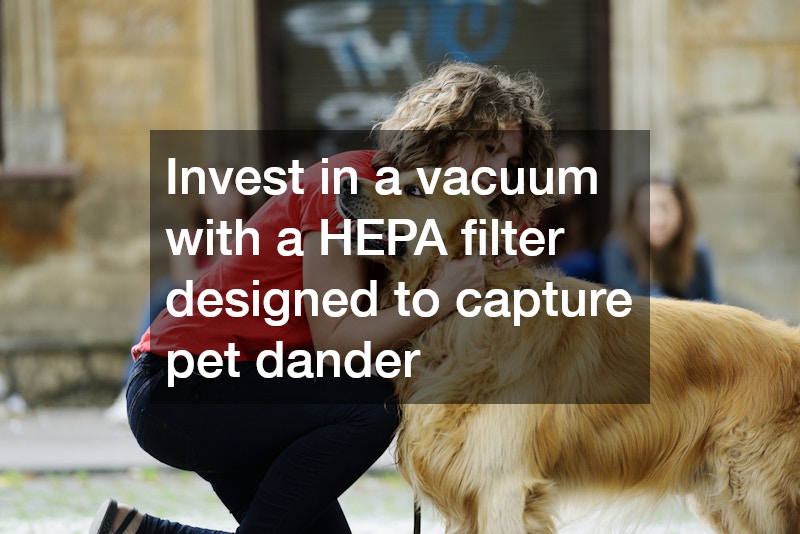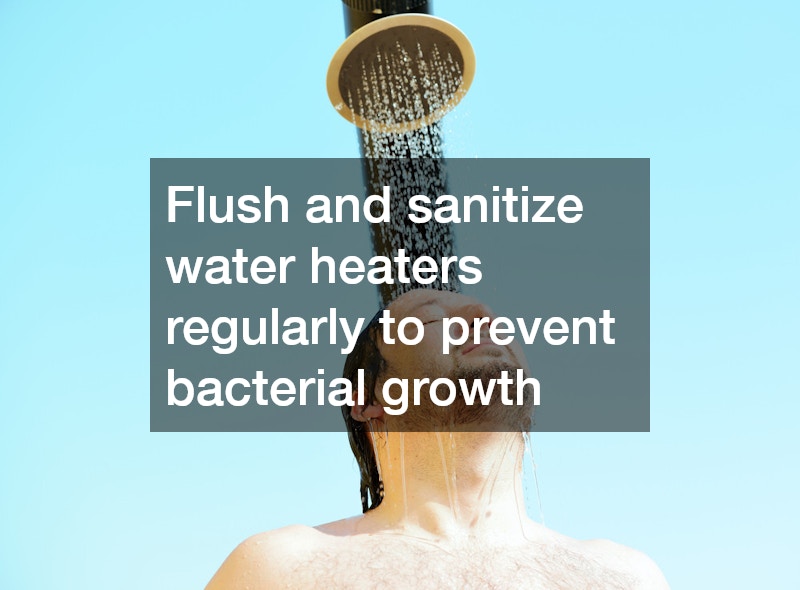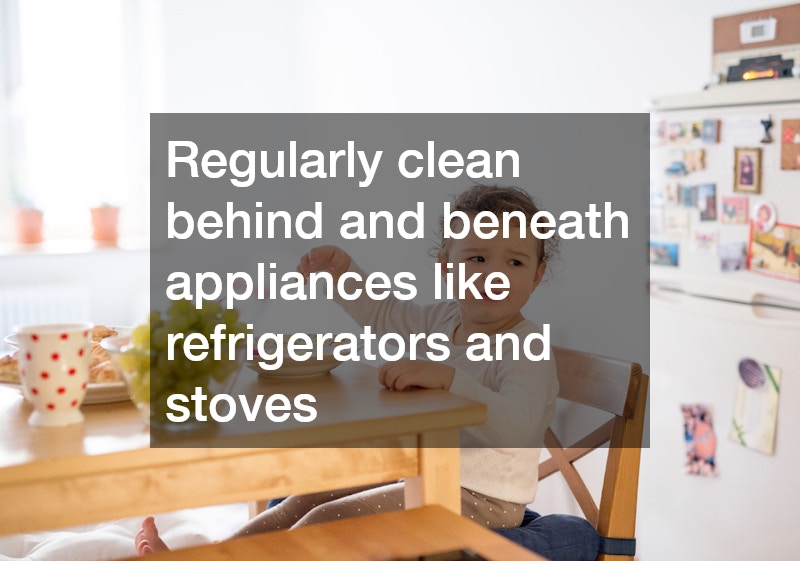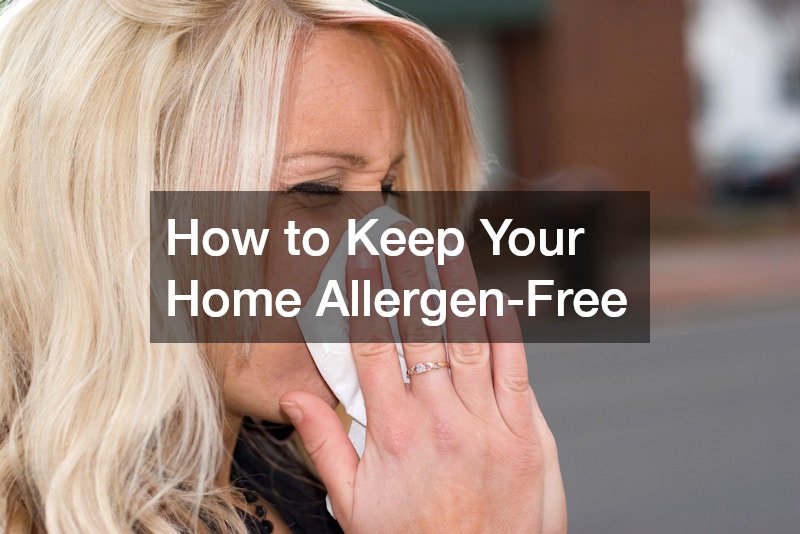Keeping your home allergen-free is essential for the health and comfort of family members with allergies or sensitivities. Allergens like mold, dust, pollen, and pet dander can easily accumulate if not actively managed. Fortunately, with a mix of routine cleaning, smart upgrades, and professional services, you can significantly reduce allergen exposure. Below, we’ll explore strategies for tackling allergens throughout your home, from bedrooms to backyards, with actionable tips and recommendations for services and products.
1. Maintaining a Clean and Allergen-Free Bedroom
The bedroom is where we spend a significant portion of our time, making it a critical area to keep allergen-free. Unfortunately, it’s also a hotspot for allergens like dust mites, pet dander, and even pests such as bed bugs. These triggers can lead to respiratory discomfort, skin irritations, and interrupted sleep, especially for allergy-sensitive individuals. To create a safe and allergen-free environment, focus on thorough cleaning, proper pest management, and controlling pet allergens.
Eliminate Bed Bugs and Dust Mites
Bed bugs and dust mites are among the most common causes of bedroom allergens. While dust mites thrive in warm, humid bedding, bed bugs can be an even greater nuisance. Here’s how to effectively control them:
- Seek professional help for bed bugs:
- If you suspect an infestation, don’t delay hiring professional bed bug services. They use safe and effective methods to eliminate these pests and prevent re-infestation.
- Early detection is key—look for signs like reddish-brown stains on sheets or small bites on exposed skin.
- Wash bedding regularly:
- Clean sheets, pillowcases, and blankets in hot water (at least 130°F) weekly to kill dust mites and their eggs.
- Use unscented hypoallergenic detergents to avoid introducing additional irritants.
- Invest in allergen-proof bedding:
- Cover pillows, mattresses, and box springs with hypoallergenic, zippered covers to block dust mites from nesting.
- Replace pillows every 1-2 years, as they can become breeding grounds for mites over time.
Recommended Products:
- AllerEase Allergen Barrier Mattress Protector – Effectively blocks allergens while providing a comfortable sleeping surface.
- Miele Compact C2 Electro+ Canister Vacuum – Equipped with a HEPA filter for deep cleaning around the bed and carpets.
Manage Pet Allergens
Pets are beloved companions, but their fur, dander, and saliva can contribute to allergens in the bedroom. Taking proactive measures can help minimize their impact.
- Regular grooming:
- Schedule professional dog grooming every 4-6 weeks to manage shedding and reduce dander.
- Opt for hypoallergenic pet shampoos to soothe skin and control allergens.
- HEPA vacuuming:
- Invest in a vacuum cleaner with a HEPA filter designed to capture even the smallest particles of pet dander and hair.
- Focus on upholstered furniture, rugs, and corners where pet hair tends to accumulate.
- Restrict bedroom access:
- Train pets to stay out of the bedroom, or at least designate pet-free zones, such as the bed.
- Use washable pet beds and blankets in other areas of the home to contain allergens.
Recommended Products:
- Dyson Ball Animal 2 HEPA Vacuum – Specifically designed for homes with pets, this vacuum captures microscopic allergens with ease.
- Burt’s Bees Oatmeal Shampoo for Dogs – A hypoallergenic option that’s gentle on sensitive pet skin.
2. Tackling Hidden Allergens in Damp Areas
Damp areas like basements and bathrooms are hotspots for mold and mildew, which can trigger respiratory issues. Regular maintenance and professional help can prevent mold buildup and keep these spaces allergen-free.
- Prevent mold with professional help:
- Schedule a mold rhttps://emediation service to assess and treat mold-prone areas.
- Use a dehumidifier to keep humidity levels below 50%.
- Clean vents and reduce moisture:
- Arrange for dryer vent cleaning to remove trapped lint and moisture, which can contribute to mold.
- Regularly clean bathroom tiles and grout with a vinegar solution to prevent mold growth.
- Fix leaks promptly to prevent water accumulation.
Recommended products:
- hOmeLabs 50-Pint Dehumidifier
- Professional dryer vent cleaning services like Dryer Vent Wizard
3. Upgrading Appliances for Cleaner Air and Water
Your HVAC and water systems are essential to maintaining a healthy, allergen-free home environment. Airborne allergens like dust, pollen, and mold spores, as well as waterborne irritants, can cause discomfort and trigger allergic reactions if not effectively managed. Upgrading and maintaining these systems not only improves air and water quality but also reduces potential health risks for allergy-sensitive family members. Here’s how to keep these systems in top condition.
Enhance Indoor Air Quality
Air quality directly impacts respiratory health, and poorly maintained HVAC systems can circulate dust, mold spores, and other allergens. Taking steps to optimize your HVAC system ensures cleaner, healthier air.

- Schedule regular HVAC maintenance:
- Work with a professional AC repair company to inspect and service your HVAC system annually.
- A tuned-up system operates efficiently, circulates cleaner air, and prevents mold and dust buildup in ducts.
- Replace air filters consistently:
- Use high-efficiency HEPA filters designed to capture 99.97% of airborne particles, including allergens like pollen, pet dander, and dust mites.
- Replace filters every three months or more frequently during high pollen seasons or if you have pets.
- Add air purifiers in key rooms:
- Place air purifiers in bedrooms, living rooms, or spaces where allergens are most concentrated.
- Look for purifiers with HEPA filters and activated carbon to trap odors, pollutants, and allergens effectively.
Recommended Products:
- Honeywell HPA300 HEPA Air Purifier – Ideal for medium to large rooms, this purifier effectively captures allergens and odors.
- Filtrete 16x25x1 HEPA Air Filter – A budget-friendly option for residential HVAC systems.
Improve Water Quality
Water quality is often overlooked in allergen control, but hard water and bacterial contamination can irritate sensitive skin and exacerbate allergies. Taking steps to improve your water supply can enhance health and comfort.

- Install a water softener:
- A new water softener reduces mineral deposits that can irritate skin and clog appliances. Soft water is also gentler on sensitive skin, reducing eczema flare-ups.
- Opt for models that automatically adjust to water usage for energy efficiency.
- Sanitize water heaters regularly:
- Flush your water heater every six months to remove sediment and prevent bacterial growth, which can contaminate your water supply.
- Consider scheduling a professional inspection to ensure the system is free of mold or other allergens.
Recommended Products:
- Whirlpool WHES40E 40,000 Grain Water Softener – A highly efficient model designed for larger households, offering significant allergen reduction in water.
- Camco Water Heater Flush Kit – An easy-to-use tool for flushing water heaters and maintaining optimal performance.
4. Outdoor Allergen Management
Your outdoor spaces, while enjoyable, can be a major source of allergens such as pollen, mold, and debris. For individuals with allergies, managing these outdoor triggers is essential to reduce exposure both outside and inside the home. By adopting thoughtful landscaping practices and maintaining your yard, you can create an outdoor environment that minimizes allergens while remaining functional and beautiful.
Control Pollen and Tree Allergens
Pollen and tree debris are among the most common outdoor allergens, often entering your home through open windows or on clothing and shoes. Managing trees and outdoor areas can significantly reduce these allergens.
- Hire a local tree service for pruning and removal:
- Overgrown branches and dense tree canopies can trap pollen and encourage mold growth, especially during wet seasons.
- If your yard has high-pollen trees like birch, oak, or cedar, consult a local tree service to remove or replace them with low-pollen alternatives.
- Clean gutters regularly to prevent mold:
- Accumulated leaves and debris in gutters can create a breeding ground for mold, which releases spores that aggravate allergies.
- Clean gutters at least twice a year, especially in the fall, or consider installing gutter guards to minimize buildup.
Design a Low-Allergen Landscape
Thoughtful landscaping can transform your yard into a low-allergen oasis. By selecting the right plants and ground cover materials, you can significantly reduce allergen production.
- Plant low-pollen trees and shrubs:
- Choose allergy-friendly species like juniper, magnolia, or hydrangeas, which produce less pollen than traditional landscaping trees.
- Avoid high-pollen plants like ragweed, Bermuda grass, or certain maples.
- Replace mulch with decorative stones or gravel:
- Organic mulch can retain moisture, encouraging mold growth and fungal spores. Switching to decorative stones or gravel not only prevents this but also provides a modern, low-maintenance look.
- Keep grass trimmed and well-maintained:
- Mow the lawn frequently to prevent grass from flowering and releasing pollen. Regular visits from a landscaping company will help manage your grass.
- Consider replacing traditional turf with allergy-friendly ground covers like clover or moss for a low-maintenance option.
Common Allergy-Causing Plants and Trees to Watch Out For
While greenery enhances the beauty of outdoor spaces, certain plants and trees are notorious for triggering allergies due to their high pollen production. Understanding which species to avoid or replace can be a game-changer for creating an allergy-friendly yard. Below are some common allergy-causing plants and trees to be mindful of when planning your landscaping or working with a professional.
High-Pollen Trees
Some trees release significant amounts of pollen during their blooming seasons, making them top culprits for outdoor allergies.
- Birch:
- Known for its lightweight pollen that can travel long distances, birch trees are a major allergen during spring.
- Consider replacing birch trees with species like dogwood or magnolia, which are less allergenic.
- Oak:
- A popular landscaping tree, oak produces large amounts of allergenic pollen in the spring.
- Substitute with female ginkgo trees, which do not release pollen.
- Cedar and Juniper:
- These evergreens are notorious for producing allergenic pollen, especially in late winter or early spring.
- Opt for a non-pollinating juniper variety or plant low-pollen shrubs as alternatives.
- Maple:
- Red maple, in particular, can produce allergy-triggering pollen.
- Replace with less allergenic trees like crape myrtle or pear trees.
Allergy-Inducing Grasses
Grasses can be a significant source of outdoor allergens, especially during mowing or blooming periods.
- Bermuda Grass:
- This warm-season grass is a heavy pollen producer and a common allergen.
- Consider switching to fescue or buffalo grass, which produce less pollen.
- Kentucky Bluegrass:
- A favorite for lawns, but its pollen can trigger allergies in late spring.
- Replace with clover lawns for a low-allergen and eco-friendly alternative.
Pollen-Producing Plants
While flowers are usually appreciated for their beauty, some species produce pollen that easily spreads through the air.
- Ragweed:
- Ragweed is one of the most potent allergenic plants, producing pollen from late summer to early fall.
- Remove ragweed plants immediately and replace them with colorful, pollen-free options like zinnias or begonias.
- Goldenrod:
- Often mistaken for ragweed, goldenrod produces airborne pollen that can trigger allergies.
- Swap goldenrod for allergy-friendly plants like lavender or salvia.
- Chrysanthemums:
- These popular garden plants are part of the daisy family, which can trigger contact or respiratory allergies.
- Replace with roses or tulips, which are less likely to spread allergens.
5. Revamping the Kitchen for Allergen Control
The kitchen is a gathering space, but it can also harbor allergens in hidden nooks and crannies. Upgrading appliances and improving ventilation can reduce allergen buildup significantly.

- Remodel with allergen resistance in mind:
- Consult a kitchen remodeler to upgrade ventilation systems and replace porous surfaces with easy-to-clean options like quartz countertops.
- Opt for closed storage to keep utensils and pantry items dust-free.
- Prevent mold and dust in connected areas:
- Perform dryer vent cleaning in laundry rooms near the kitchen to reduce moisture.
- Regularly clean behind and beneath appliances like refrigerators and stoves to prevent allergen buildup.
Recommended products:
- Bissell SteamShot for deep cleaning kitchen surfaces
- Whirlpool Kitchen Ventilation Hoods
6. Managing Pet Allergies and Healthcare Needs
Pets are beloved family members, but they can also bring allergens into your home. Keeping them clean and healthy is essential to reduce allergic reactions.
- Ensure pet health:
- Visit a local veterinarian regularly to address pet-related allergies and receive guidance on reducing dander.
- Feed pets high-quality, hypoallergenic diets to improve skin and coat health.
- Maintain grooming schedules:
- Schedule dog grooming every 4-6 weeks to manage shedding and dander.
- Use pet wipes for quick cleanups between baths.
7. Seasonal Maintenance for an Allergen-Free Home
Seasonal changes often bring specific allergens like pollen in spring or mold in fall. Preparing your home for these shifts is key to minimizing exposure.
- Prepare for seasonal allergens:
- Partner with a local tree service to remove fallen leaves and debris in the fall.
- Clean gutters and downspouts to prevent water pooling and mold.
- Seasonal HVAC maintenance:
- Schedule a tune-up with an AC repair company to ensure air filters and ducts are clean before high pollen seasons.
- Winterize windows and doors with weather stripping to reduce drafts and allergens.
Recommended products:
- 3M Window Insulation Kit
- HVAC services like One Hour Heating & Air Conditioning
Creating an allergen-free home requires a mix of routine cleaning, strategic upgrades, and professional assistance. By following the actionable tips and recommendations outlined here, you can create a healthier living environment for your family.


